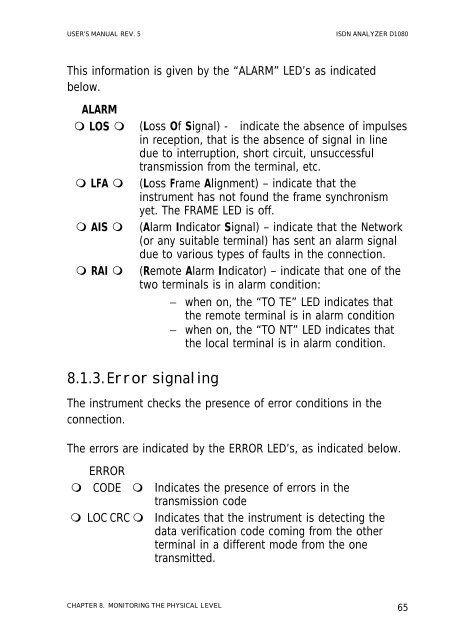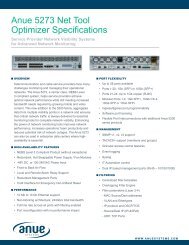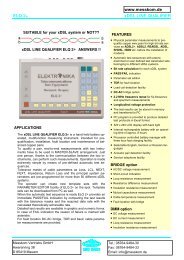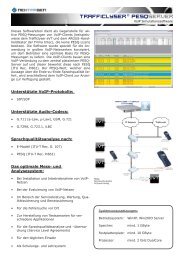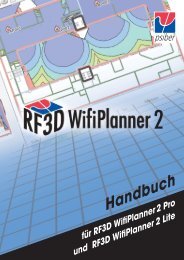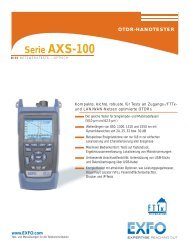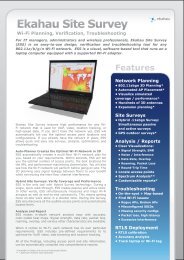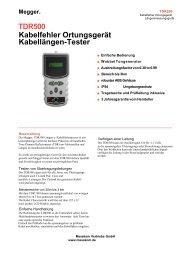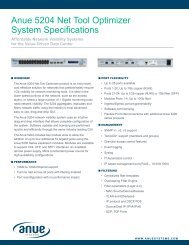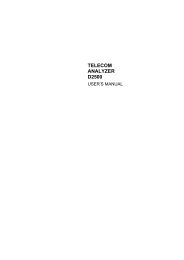ISDN ANALYZER D1080 - messkom.de
ISDN ANALYZER D1080 - messkom.de
ISDN ANALYZER D1080 - messkom.de
You also want an ePaper? Increase the reach of your titles
YUMPU automatically turns print PDFs into web optimized ePapers that Google loves.
USER’S MANUAL REV. 5 <strong>ISDN</strong> <strong>ANALYZER</strong> <strong>D1080</strong><br />
This information is given by the “ALARM” LED’s as indicated<br />
below.<br />
ALARM<br />
� LOS �<br />
(Loss Of Signal) - indicate the absence of impulses<br />
in reception, that is the absence of signal in line<br />
due to interruption, short circuit, unsuccessful<br />
transmission from the terminal, etc.<br />
� LFA � (Loss Frame Alignment) – indicate that the<br />
instrument has not found the frame synchronism<br />
yet. The FRAME LED is off.<br />
� AIS � (Alarm Indicator Signal) – indicate that the Network<br />
(or any suitable terminal) has sent an alarm signal<br />
due to various types of faults in the connection.<br />
� RAI � (Remote Alarm Indicator) – indicate that one of the<br />
two terminals is in alarm condition:<br />
8.1.3. Error signaling<br />
− when on, the “TO TE” LED indicates that<br />
the remote terminal is in alarm condition<br />
− when on, the “TO NT” LED indicates that<br />
the local terminal is in alarm condition.<br />
The instrument checks the presence of error conditions in the<br />
connection.<br />
The errors are indicated by the ERROR LED’s, as indicated below.<br />
ERROR<br />
� CODE �<br />
Indicates the presence of errors in the<br />
transmission co<strong>de</strong><br />
� LOC CRC � Indicates that the instrument is <strong>de</strong>tecting the<br />
data verification co<strong>de</strong> coming from the other<br />
terminal in a different mo<strong>de</strong> from the one<br />
transmitted.<br />
CHAPTER 8. MONITORING THE PHYSICAL LEVEL 65


